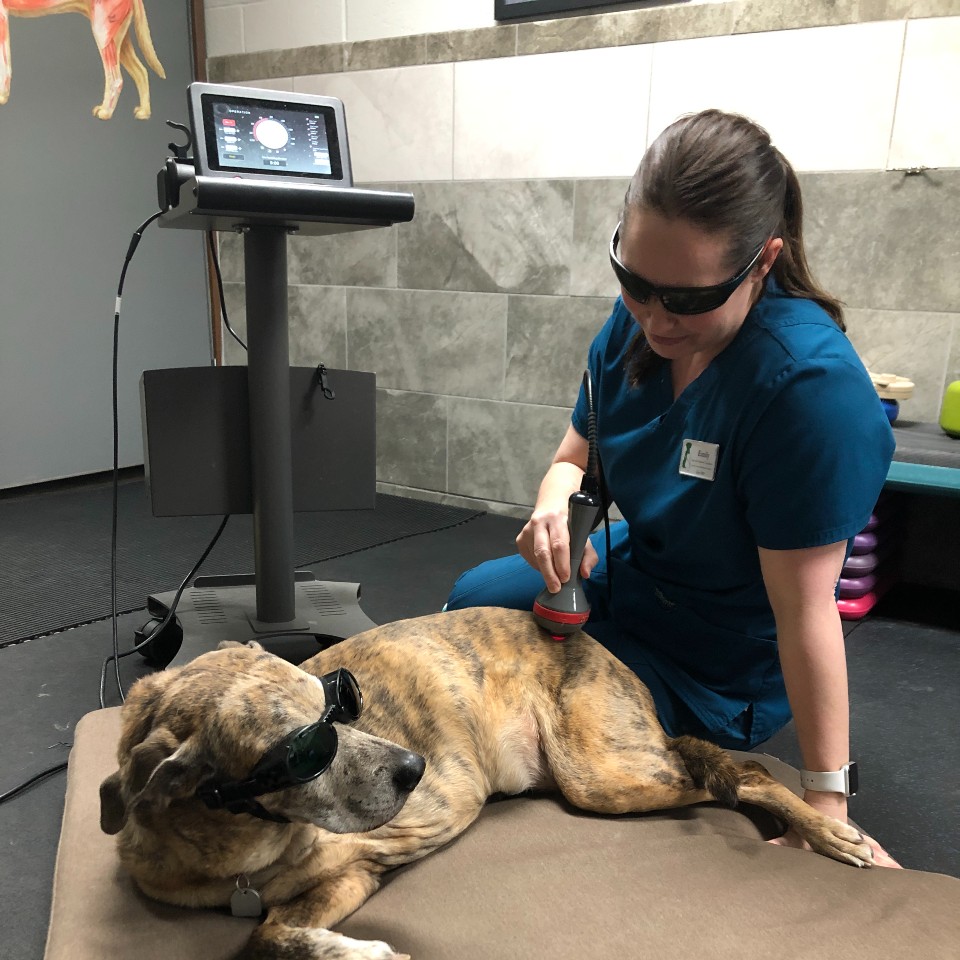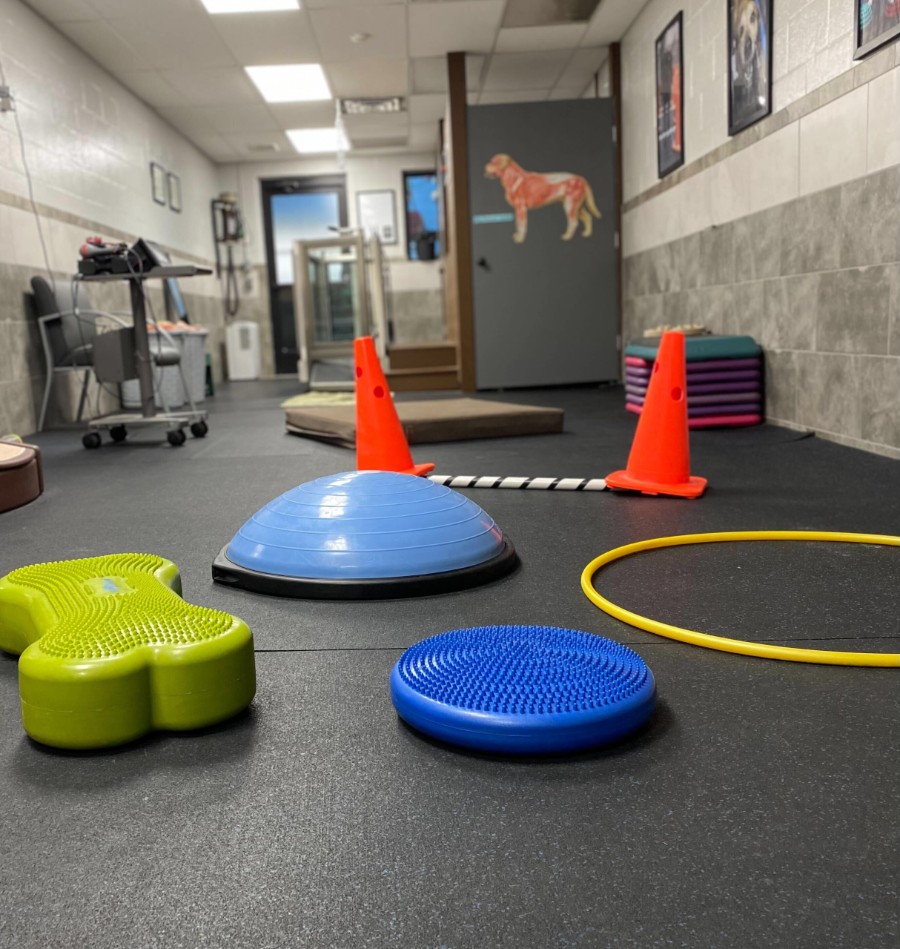
Tools of the trade: Veterinary Rehab Modalities
This is part two of a three-part series diving into the veterinary rehabilitation program at Cascade Hospital for Animals and the benefits it brings to senior pets. In part one, rehabilitation nurse Emily Harkness talked about how she and Dr. Greg Paplawsky view rehab for seniors as age management to ease the transition to their golden years and how she works with owners to make home life as comfortable as possible.
In order for rehabilitation to work for pets and their families, it can’t be one-size-fits-all therapy. Among the elderly pets Emily works with, “there are different personalities. There are dogs who want variation. They don’t want to do the same thing every time they see me,” said Emily. “And then you have dogs who want routine; they want this room set up exactly the same as it was the week before. And then you have dogs who are so bored when I do it that way that they just sit down. They're like, ‘Yeah, we've done this and I would prefer something else.’”
 Different personalities, different tools
Different personalities, different tools
At CHFA’s rehab facility, Emily has a variety of tools to help improve the physical health of senior pets. After she has gotten to know a certain pet and their preferences, she can tailor sessions that keep the pet engaged and interested, whether it’s a combination of therapies that changes from week to week or a comfortable routine.
“When I first start working with a dog, I determine whether they’re a movement-based dog or more of a stationary dog,” she said. “The more movement-based dogs get a little nervous when we do activities that don’t involve movement, like balancing on three legs. So we’ll step over the Cavaletti rails, walk through a hula hoop, or do figure eights.” Typically, says Emily, “Movement-based dogs are the ones who want a little variation each session.”
Emily has tools that appeal to stationary dogs, too, such as the BOSU ball, the wobble bone, and the peanut. “I’ll have them put their front feet on a step and hold it, for example. It’s about finding their comfort level and reducing stress for them.”
Moving while in place
Emily works with owners of senior pets to determine goals for improving their day-to-day lives: staying able to get in and out of cars, climb stairs, and generally improving their mobility. Low-impact exercise is a great way for dogs to build strength so they can continue to live their lives comfortably.
One of the popular modalities Emily uses is the water treadmill. “It is great for low-impact exercise: it’s heated so it warms the joints as they’re walking. It makes them buoyant, so they don’t weigh as much but can still exercise. Plus, the viscosity of the water builds muscle faster so they don’t have to walk as long. It’s just an easier way for them to exercise in a low-impact way.” Many dogs enjoy using the treadmill and look forward to getting into it on their rehab days. Often part of the fun is a dab of peanut butter or cheese at the front that serves as both a motivator to keep moving and a welcome diversion from the workout!
“At the start the treadmill can be a lot for a dog,” said Emily. “So I start slowly at their pace and we figure out our little language ourselves, and then they want to be there.” Especially with older pets, as time goes on, Emily adjusts the time and speed accordingly to keep the pet comfortable. “I do drop the time and the speed and keep the owners aware that this is happening,” said Emily. “It is a part of the aging process.”
 More than exercise
More than exercise
Not all of veterinary rehab is exercise-based. Emily uses massage and laser therapy to stimulate aging muscles and joints and help alleviate pain and discomfort associated with arthritis and other age-related conditions.
There is also the mental component to a dog’s overall health. She provides pets with mental stimulation to keep their minds sharp. “I love to use puzzles,” she said. “As they age and are less active, we tend to think, ‘Oh, they're just sleeping more.’ And sometimes they are just sleeping more, but sometimes they're bored.”
Emily has a few types of puzzles to keep her patients engaged. “I have something called a snuffle mat that allows them to use their sense of smell to seek out treats; I love to use that to get them engaged and interested in what's going on. Even for my patients that are paralyzed, I use a ton of puzzles because it keeps them mentally moving.”
No matter the pet’s needs or personality type, Emily finds the right balance of therapies to make sessions comfortable, low-stress, and effective.
In part three of this series, we’ll follow a long-time patient of Emily’s through a typical session and look at how rehab has helped ease the aging process!



